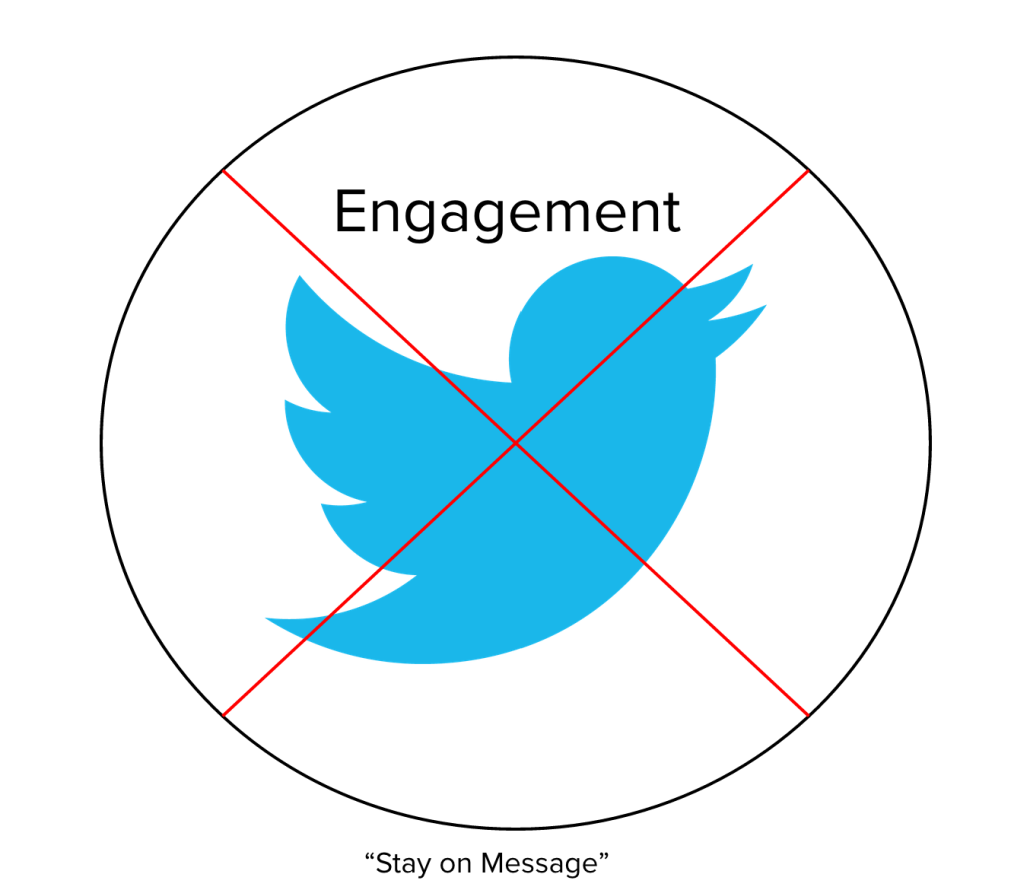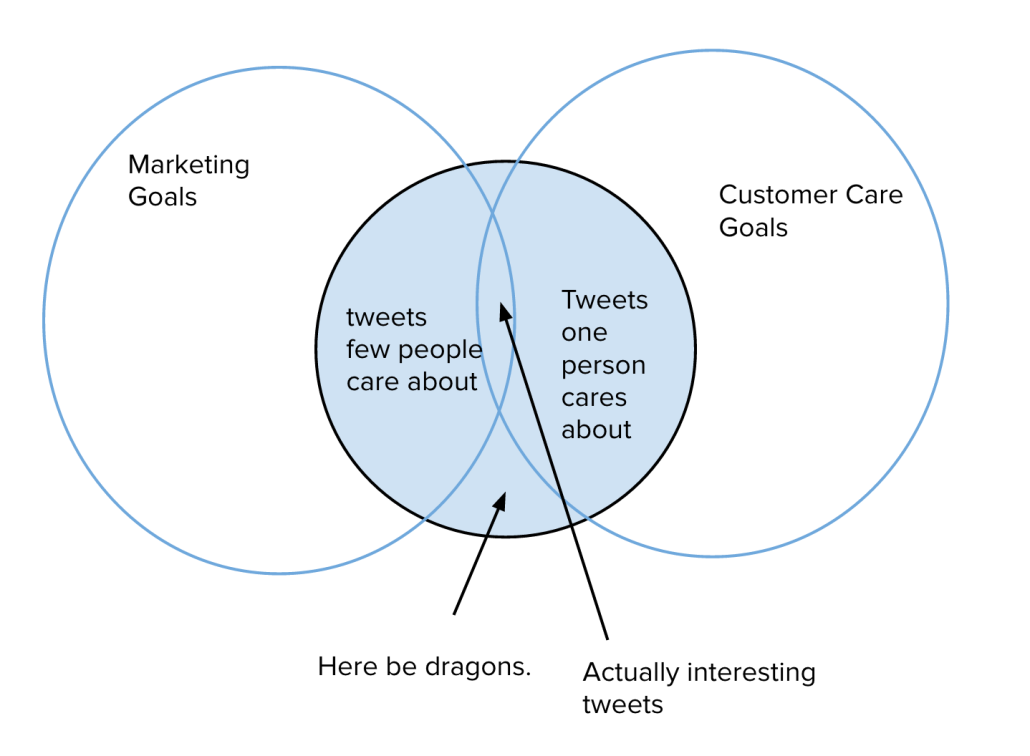Social Media and Community Management For Startups: Part 1
This will be the first of a series of articles from StartupYard about the basics of Social Media and Community Management for Startupers. We’ll focus on companies who are just getting started with social media.
While the social media landscape constantly changes, best practices, in many ways, extend to a time before Facebook, Twitter, and Instagram. They are based in the age-old skills of clear, consistent and effective print marketing and customer relations. So that’s where we’ll start.
A future installment of this series will deal with the basics of building and maintaining your online communities in social networks. But first, let’s cover a few basics about Community Management:
Should My Company Be on Social Media?
This is a surprisingly important question for many startups. The answer is: not necessarily. Marketing blogs and (surprise) social media evangelists will tell you that social media is the cure-all marketing solution for any business in the 21st century. The truth is that social media is the perfect venue for marketing blogs and social media evangelists to talk about how great social media is for growing your business. For social media companies, this is true, and because they focus on social media- they’re great at getting that message out. As in the above “tips,” for startups, many of these people stand to benefit from you wasting a lot of effort on a social media presence you might not need.
Social has become an important channel in the past decade for 4 main things: inbound marketing, content, advertising, and customer care. Now, if you’re a B2B business with a small pool of potential clients, and you have to go door to door to recruit them personally, then social media is not going to represent a huge growth opportunity for you. In that case, it may even be preferable not to engage in social media, because it is a) a waste of time and effort, and b) your lack of engagement in social channels may reflect badly upon your company image. What happens when a potential client who you’ve contact by email follows you on Twitter, or looks up your Facebook page, and discovers that you have 3 likes, an outdated set of team pictures, and no new posts for 6 months? Once you start a social media presence, you have to commit to maintaining it, so the cost/benefit ratio has to be clear before you start. Until you can see a reason why having a Facebook page or active Twitter handle will have some real benefit, you should hold off.
Which Social Media Should I Use?
This is of course a question that pertains to your goals in using social media. Supposing that you are a B2C company that would like to grow word-of-mouth buzz about your products, Facebook and Twitter are the natural yin and yang of social media. Other networks, like Instagram or Pinterest, are more of interest to media and niche product companies, interested in promoting specific products or content. If, for example, your products are used to create beautiful pieces of art, or if you sell something physical and photogenic, then these platforms should be interesting from a content perspective. If not, though, you should seriously consider confining yourself to the big two.
Between the “big two,” Twitter encourages more active engagement, media sharing, and content curation than Facebook, but Facebook offers a cleaner, simpler, safer relationship with your followers. Think of Twitter like a party where you have the opportunity to hand out your business cards to 300 Million people at once. Facebook is more like a city, where you can set up your own shop. People can stop by, and they’ll see your posts as they pass by, but you can’t go out and flag them down.
These two approaches have their own intrinsic values, and you can consider them complimentary. Facebook posts made from company pages garner “impressions” (that is, they appear in front of users, whether they are clicked or noticed or not), on average about 16% of the time. This means that if your Facebook page has 1000 followers, say, and you post at regular intervals every few days, then your average post will appear for about 160 people. If the post is liked and shared, these numbers can increase dramatically. A post that is shared by a friend who also likes the same page has about a 35% chance of being seen. Facebook’s algorithm, while it remains mysterious, also appears to favor posts that have early traction, and shows these to even more of your followers.
On the contrary, tweets are much more ephemeral. Twitter Analytics, indicates, for example, that with over 2000 followers, we generate between 100 and 400 impressions for the typical Tweet. But since Twitter feeds are updated on a constant basis, “views,” probably include a larger number of users who skip past most of the posts in their feed at any given moment. Engagement rates with those tweets show that indeed, of those impressions, only a small percentage (between 1% and 4%), engage with a tweet in any way. That may seem impressive on the surface, but it comes out to between 1 and 10 people actually engaging with a particular tweet, out of 2000 followers and nearly 250 Million active users.
On the other hand, the fast pace of Twitter allows for much faster organic growth, as you can retweet, favorite, be retweeted and favorited, and other users will see and be able to follow you based on your interactions- unlike with Facebook. This makes it much easier to alter and hone your tweeting style to engage with more followers. Also, Twitter doesn’t appear to alter the ratio of views/followers based on the number of tweets you make in a day, granted the number is not excessive (less than 10 “broadcast” tweets per day). Thus, Twitter tends to yield a larger number of followers, while delivering a lower average number of impression for anything you happen to post. This encourages you to post more, and to target more specific hashtags or even specific other accounts for interaction.
Twitter is also a much more efficient channel for communicating multi-laterally with your existing users, as Facebook pages don’t allow for public one-to-one interactions as Twitter does. This makes Twitter a much more commonly employed platform for Social CRM or “Customer Relationship Management,” which I’ll talk more about later.
In sum, most B2C web companies should probably be on Facebook, and should at least have a Twitter handle reserved for themselves, even if they’re not necessarily ready to use it. But don’t open 5 social media accounts all at once. Focus on the ones that serve your immediate interests: Facebook for building buzz, and perhaps for some advertising; Twitter for talking with your community.
What is Community Management?
Community management in its many current forms, is a relatively new development in web business, and it means different things to different companies and industries. But at its base, it is a mix of marketing, branding, and customer service. As web businesses have built themselves around communities of users, leveraging their existing customer base to promote and sell their latest products, community management has emerged as a way of handling the concurrent interests of a company’s marketing, branding, and customer relationships in a more fluid way.
Whereas a tech company might in the past have needed dedicated sales, marketing, customer service, and Q/A departments all dealing with their separate domains, today many of these activities all occur in the same places online. If you are using Facebook and Twitter, along with email to announce a new product, the success of that announcement depends upon you having a strong following on those platforms- a base of users who are paying attention to what you say in all of those channels. That strong following depends on your community manager’s using that platform to provide value to your followers and users.
Below is a sampling of a Community Manager’s possible roles. Depending on the size of a company, the community manager may be the same person running sales and marketing for the whole company. If your company has a biz dev specialist, a marketer, and a sales specialist, then often the marketer will be responsible for community management as well, in collaboration with the other two. For larger teams that have customer service, Q/A, marketing, and sales teams, a community manager can be brought in as a role that bridges many of their individual responsibilities.
A Community Manager’s Roles
- Maintaining an Internal Community
The “Community Manager” role grew early on through message board admin roles. Today, a similar role is still played in online communities based around gaming, content sharing, and discussion. If your product has an internal community feature, it’s likely that a community management role will have to evolve relatively early on to manage the safety and stability of your internal community. Common jobs include maintaining an FAQ, being able to escalate and resolve user complaints, and enforcing the platform’s terms of use. The role may be filled by someone with a focus on customer service, rather than marketing.
- Social Media Outreach
For companies with a respectable base of engaged users, a community manager can encourage cohesiveness of its communities on social media, outside the company’s own platform. This role sits between customer service and marketing, with a good community manager also being familiar with the company’s Q/A processes, and being able to pass along valuable user-generated information on bugs and missing features in the company’s products.
The community manager in this role must be able to handle customer inquiries about sales, as well as handle simple customer issues, with the ability to escalate customer complaints to the appropriate colleagues efficiently, following up on the results to ensure satisfaction. In addition, the community manager has to use positive interactions to make impressions on the community, by, for example, sharing successful customer service interactions and positive reviews for the company and products with the community on social media, or by email. He or she may also currate and share chatter about company products from around the web on the company’s social media accounts.
The community manager controls the conversation: making sure that misapprehensions and rumors about your company and products are sorted out quickly, and don’t spread. Are people sharing a blog post bashing your company, full of false statements and innuendo? Your community manager should spot this, and provide the official line- taking steps to make sure that rumors and negative buzz don’t have any room to grow. At the same time, the community manager spots and promotes positive reviews and mentions of the product, so that they are seen by even more people. If you aren’t in the conversation, you can’t influence it.
Depending on the size of a company, this role may be shared with PR, and marketing, and the community manager may also be the company’s general head of communication, blogger, and marketer (such as in the case with Startupyard itself- I currently fill all of those roles at once). In other cases, this role may evolve from customer service, or from an internal community management role.
- Customer Advocate
One of a community manager’s most important roles is observation and intelligence gathering. As the person with their finger on the pulse of the company’s customers, the community manager should be able to deliver key insights into customer sentiment and behavior. They should be able to identify common problems and common positive feelings about a company’s products, and the company itself. They should also have some insight into the makeup of the company’s active community demographics: who are the users? What defines them as a group?
A good community manager should be able to tell a head of marketing what customers are most interested in hearing about, and what bothers them most about the company’s products. They should also be able to identify Q/A and UX failures, and to provide some insight into user preferences in these areas. They should be able to identify which competitors customers are most interested in.
Do We Need A Community Manager?
A friend of mine who is a producer for a very popular gaming company told me this recently: “Nobody needs a community manager, until they really need a community manager.” This is to say, if your intention is to grow a base of users quickly, and to leverage them to grow your community and public awareness of your products, you’ll need a community manager eventually. And that need will arise suddenly, and possibly unpleasantly, when you realize that a lot of people are discussing your products, and that you are not in control of the conversation.
Yours would not be the first company, for example, to receive a great deal of negative press over a particular failure (a bug, a privacy lapse, platform instability, or other issue), that could have been mitigated by the presence of a community manager. Suppose a journalist or blogger wants to write about your company, but the contact email you’ve provided isn’t read by anyone, and no one answers direct messages via social media? An article or blog post can go out without you having an opportunity to engage with it, and give your side of the story. Worse, an article can float around for days and weeks without you even noticing it’s there. When people are googling you, or checking Twitter, they’ll be getting information you don’t even know about.
Social CRM
Social CRM, or “Customer Relationship Management,” is a relatively new but rapidly growing industry. These are primarily tools for customer service and community management, increasingly focused on social media channels, but including sms, telephony, email, and community message boards as well. Today, a small to medium sized company can access off-the-shelf web based products for monitoring and engaging with their online communities, whether their primary focus is in sales, marketing, or customer care. In fact, StartupYard accelerated a Social CRM company called Brand Embassy, which is doing increasingly well in the customer care segment of Social CRM.
These products allow a single person or a team to monitor conversation across multiple social media channels and internal communication platforms (like email), and get a snapshot of all the conversations going on in a company’s community at any given time. They will let you know when your products or company are being mentioned, and where, and allow you to respond on multiple channels from the same place, allowing you to efficiently manage your community as a whole.








